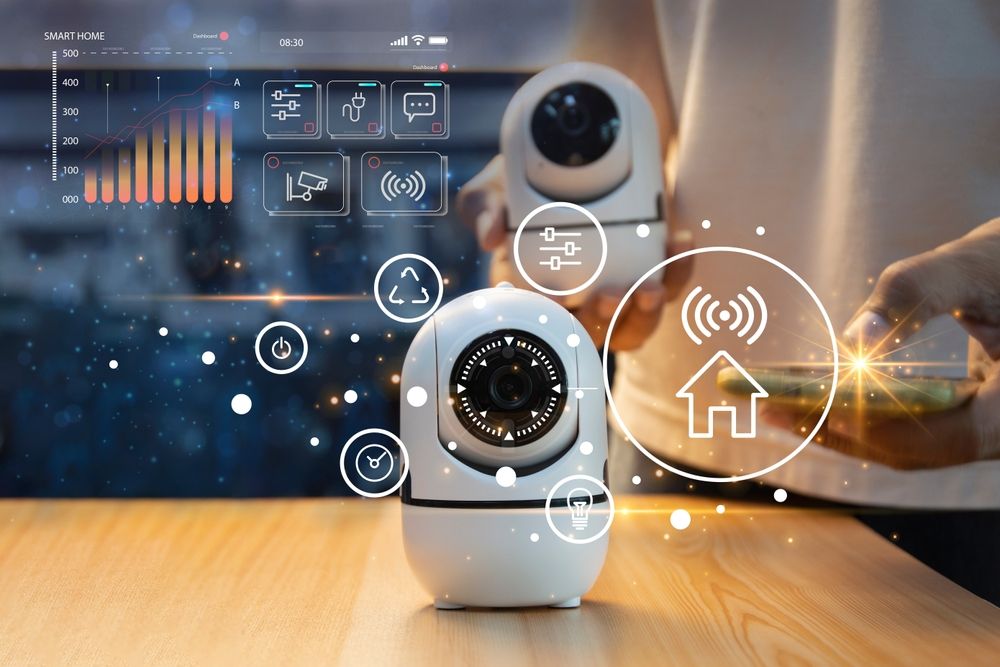Home security cameras have become an essential component of modern home safety systems. With the increasing range of options available, choosing the right camera can feel overwhelming. Whether you’re looking to monitor your front door, keep an eye on your backyard, or secure your entire property, understanding the key features to look for can help you make an informed decision. This guide covers the essential aspects you should consider before purchasing a home security camera.
1. Video Quality and Resolution
One of the most critical factors in any security camera is the quality of its video feed. Clear, high-resolution footage is essential for identifying faces, reading license plates, and capturing important details.
- Resolution: Look for cameras that offer at least 1080p (Full HD) resolution. Higher resolutions, like 4K, are available but may require more bandwidth and storage.
- Frame Rate: A higher frame rate (measured in frames per second or fps) results in smoother video. Aim for at least 30 fps for real-time monitoring.
- Low-Light Performance: Good low-light or night vision capabilities are a must for round-the-clock security. Check if the camera uses infrared LEDs or advanced sensor technology to deliver clear images in the dark.
2. Field of View and Camera Angles
The field of view (FOV) determines how much area a camera can cover. A wider FOV means fewer cameras are needed to monitor larger spaces.
- Wide-Angle Lenses: Look for cameras with wide-angle lenses (between 120° to 180°) to cover more area.
- Pan, Tilt, and Zoom (PTZ): Some cameras offer remote-controlled pan, tilt, and zoom functions, allowing you to adjust the camera’s view remotely. This is particularly useful for tracking movement or focusing on specific details.
3. Connectivity and Integration
Modern security cameras should seamlessly integrate with your existing smart home ecosystem and provide reliable connectivity.
- Wireless vs. Wired: Wireless cameras are easier to install and reposition, but may be prone to signal interference. Wired cameras offer more stable connections but require more effort during installation.
- Smart Home Compatibility: Ensure the camera is compatible with your smart home hub or virtual assistant (like Amazon Alexa, Google Assistant, or Apple HomeKit). This integration allows for voice control and automation, such as triggering other devices when motion is detected.
- Mobile App Access: A robust mobile app is vital for monitoring your cameras remotely. Look for apps that provide live streaming, playback, and easy setup. User-friendly interfaces and real-time alerts can enhance your overall experience.
4. Storage Options
Deciding how to store your footage is a crucial consideration. Most cameras offer both cloud-based and local storage options, each with its pros and cons.
- Cloud Storage: Many manufacturers provide cloud storage plans that automatically back up footage. While convenient, these plans often come with a subscription fee.
- Local Storage: Options like microSD cards or network-attached storage (NAS) allow you to store footage on-site. This method can be more cost-effective in the long run, but it may require more manual management and can be vulnerable to physical tampering.
- Hybrid Solutions: Some cameras offer a combination of both, providing flexibility and redundancy for your recorded footage.
5. Power Source and Backup
The power source of your security camera determines its placement flexibility and reliability during power outages.
- Wired vs. Battery-Powered: Wired cameras provide continuous power but require professional installation. Battery-powered cameras are more flexible in placement but require periodic recharging or battery replacements.
- Solar-Powered Options: For outdoor cameras, solar panels can offer a sustainable power source, reducing the need for frequent battery changes while ensuring consistent performance.
- Backup Options: Look for cameras with backup battery options or integrated power storage to maintain functionality during outages.

6. Motion Detection and Alerts
An effective security camera should be able to detect motion and alert you promptly to any unusual activity.
- Motion Detection: Advanced cameras use smart algorithms to detect motion, minimizing false alarms from pets, weather changes, or passing vehicles. Some cameras allow you to customize detection zones to focus on critical areas.
- Instant Alerts: Real-time notifications via mobile apps or email can keep you informed immediately when activity is detected. Look for customizable alert settings that let you decide when and how you want to be notified.
- Activity Zones: The ability to designate specific areas for motion detection helps reduce unnecessary alerts and ensures that you focus on the areas that matter most.
7. Two-Way Audio
Two-way audio functionality can enhance your security system by allowing you to listen and speak through the camera. This feature is particularly useful for:
- Interacting with Visitors: Answering the door remotely can provide convenience and added security.
- Deterrence: Speaking to an intruder in real time may deter criminal activity.
- Home Communication: In a multi-level home or when caring for elderly family members, two-way audio can help facilitate communication between different areas of your house.
8. Durability and Weather Resistance
If you’re planning to install security cameras outdoors, they need to withstand various weather conditions.
- Weatherproofing: Look for cameras rated with an IP (Ingress Protection) rating of at least IP65, which indicates that the device is dust-tight and protected against water jets.
- Temperature Range: Ensure the camera can operate in the local temperature extremes of your region, whether it’s very cold winters or hot summers.
- Mounting Options: Consider cameras with versatile mounting options, such as wall mounts, pole mounts, or magnetic bases, to ensure a secure installation in any environment.
9. Privacy and Security
Ironically, while security cameras are designed to protect your home, they can also be potential targets for hackers. It’s crucial to choose cameras with robust privacy and security features.
- Data Encryption: Look for cameras that offer end-to-end encryption for data transmission, ensuring that your footage remains private.
- Secure Access: Multi-factor authentication (MFA) and regular firmware updates can help protect your camera’s software from vulnerabilities.
- Privacy Settings: Many cameras offer privacy modes that disable audio or video recording when you’re at home, which can help address privacy concerns.
10. Cost Considerations and Subscriptions
Finally, budget plays a significant role in your final decision. While some cameras may have a higher upfront cost, they might save you money in the long run.
- Initial Cost vs. Ongoing Fees: Be sure to consider both the purchase price and any recurring subscription fees for cloud storage or advanced features.
- Warranty and Support: A longer warranty period and good customer support can provide peace of mind and protect your investment.
- Scalability: If you plan to expand your system in the future, consider cameras that integrate easily with additional units or other smart home devices.
Choosing the right home security camera involves balancing multiple factors to match your specific needs. By focusing on features such as video quality, connectivity, storage options, power sources, motion detection, and privacy, you can build a security system that not only protects your home but also integrates seamlessly into your lifestyle.
Take the time to evaluate your unique security needs and consider how each feature will benefit you. With the right research and a clear understanding of what to look for, you’ll be well on your way to creating a safer, smarter home environment. Happy shopping, and stay secure!



